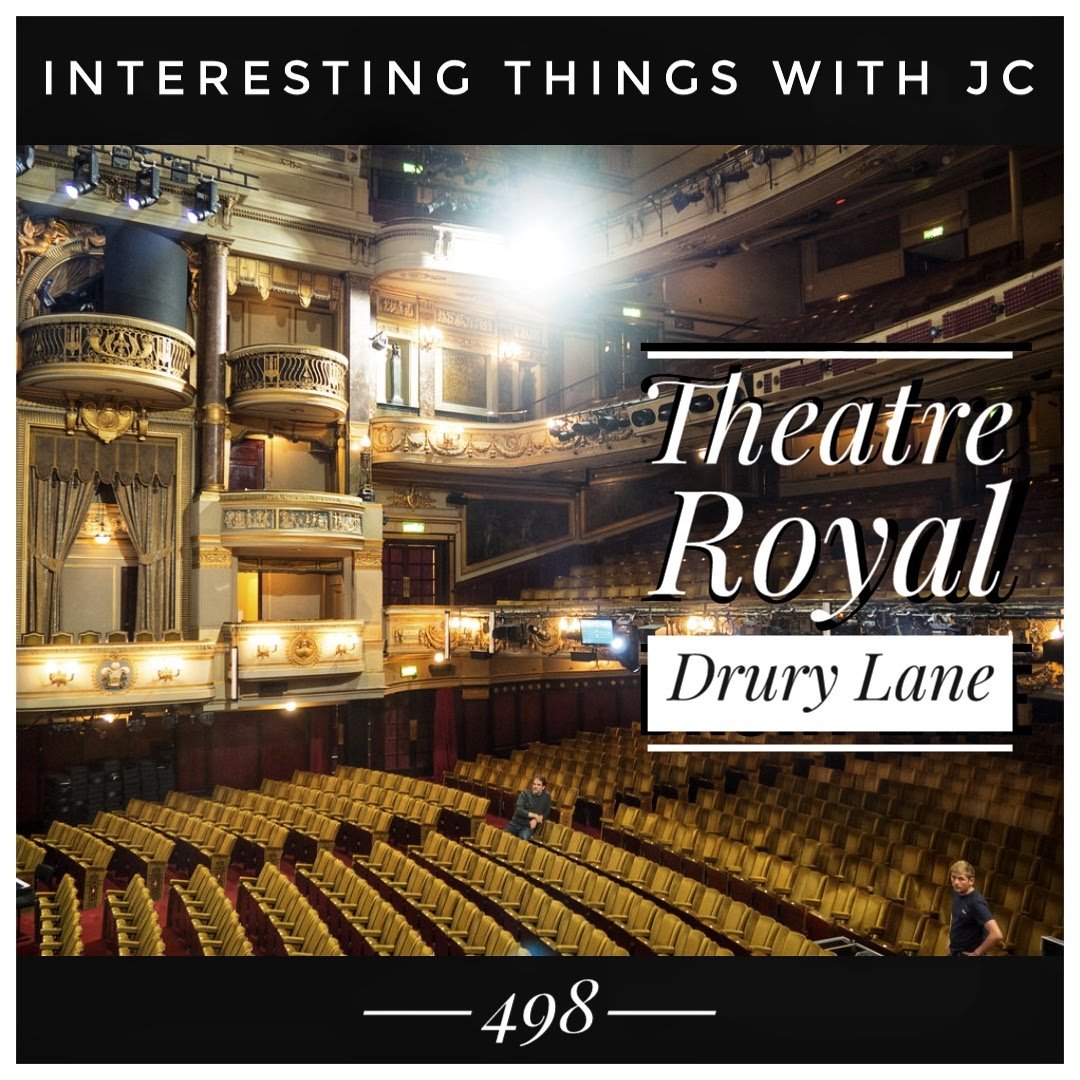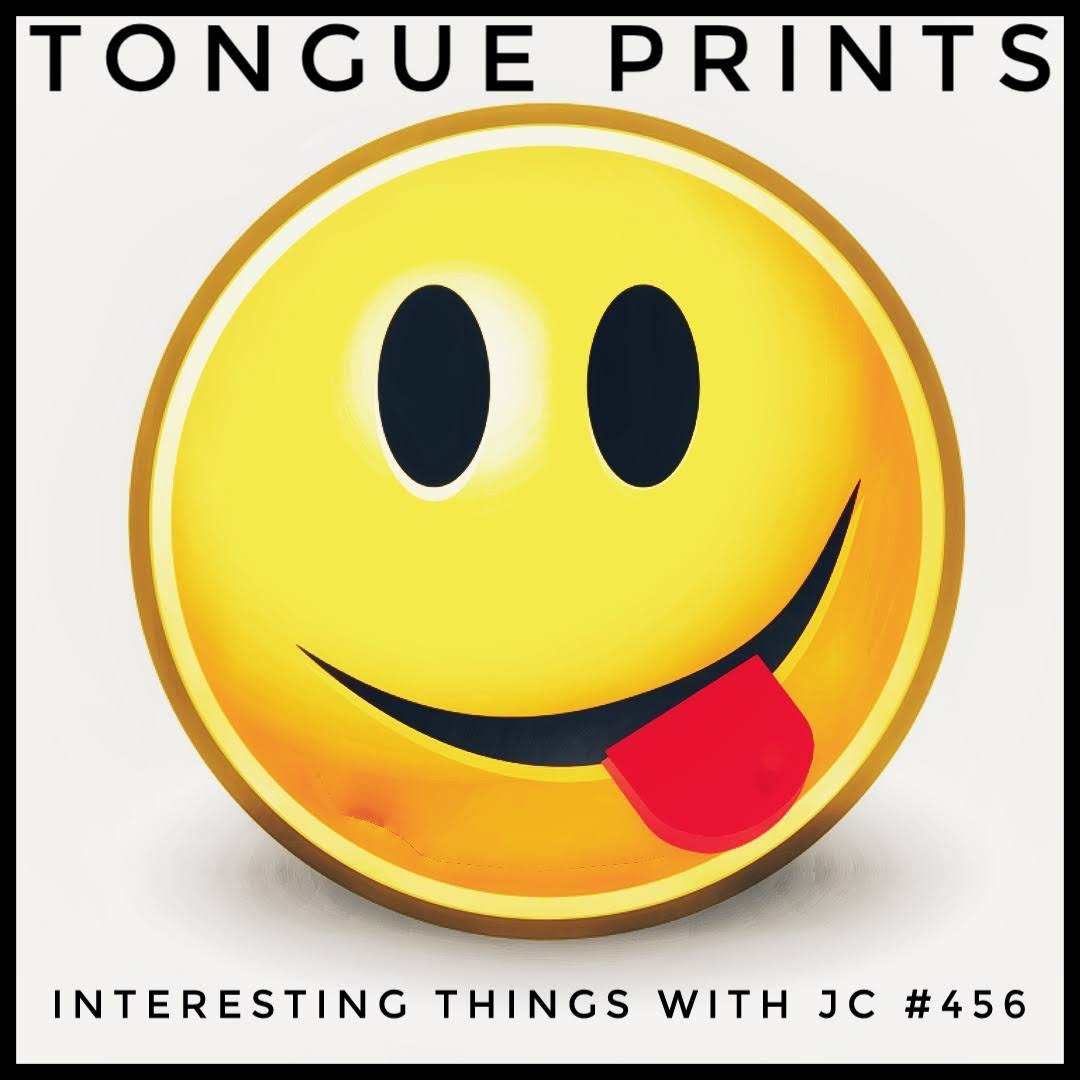A Short Story Podcast Series
Podcast Radio - Podverse - Headliner - Amazon - Apple - Audacy - Audible - Castbox - Deezer - fyyd - GoodPods - iHeartRadio - Instagram - JioSaavn - Listen Notes - Pandora - PlayerFM - PocketCasts - Podcast Republic - Podchaser - Spotify - Stitcher - Youtube
Link to Podcast Library or Scroll for Daily Feed
-
Episodes run 30 seconds to 8 minutes.
Send us your episode ideas, we’ll work the topics into future recordings, and credit you.
Homeschooling parents, teachers, and lifelong learners get priority.
Many episodes include free curriculum materials aligned to global standards.
Legal Disclaimer
All episodes of Interesting Things with JC are provided free of charge for educational purposes under fair use, with the exception of Episode #509. The series, including its associated curriculum and materials, may not be copied, resold, redistributed, or used for commercial purposes without prior written agreement and consent from JimConnors LLC. Unauthorized commercial use, reproduction, or distribution is strictly prohibited. All rights reserved © JimConnors LLC.
-
The podcast is currently in common carriage on the Podcast Radio Network.
In London, you can listen to the Podcast Radio Network over the air on DAB+ and access its variety of podcasts and audio content directly through your DAB+ radio.
In the USA, you can listen to Interesting Things with JC on Podcast Radio US in these cities:
Detroit – WCSX 94.7 HD2
Tampa – 1010 WJBR-AM
Charlotte – 94.7 FM and WSOC-HD3
Fort Myers / Naples – 96.5 FM, 101.5 FM, 105.1 FM, and WXKB-HD2
You can also stream it nationwide at PodcastRadioUS.com
-
Kick off class with a quick boost. Play an episode of Interesting Things with JC to get your students interested right off the bat. The short stories are easy to follow, and the free curriculum gives you everything you need to turn that spark into a full lesson with questions, activities, and real learning.
Each episode includes a modular micro-lesson designed to support a 30 to 45 minute class. Curriculum content appears at the bottom of the episode page in easy-to-use expandable sections.
Each lesson includes:
Lesson overview (title, grade level, subject area, learning objectives)
Key vocabulary with phonetic spelling and plain-language definitions
Core story content based on the Precise Storytelling Framework
Full podcast transcript
Student worksheet with comprehension and writing prompts
Teacher guide with pacing, strategies, and discussion tools
Quiz and assessment rubric
Standards alignment across multiple global frameworks
We are currently piloting lesson alignment to:
Approved Standards – High-Level ListNGSS – Next Generation Science Standards
CCSS – Common Core State Standards (ELA and Math)
C3 Framework – College, Career & Civic Life (Social Studies)
ISTE Standards – Technology and Digital Literacy
NCAS – National Core Arts Standards
CTE Career Clusters – U.S. Career & Technical Education
ACRL Framework – Higher Ed Information Literacy
Bloom’s Taxonomy – Cognitive Learning Objectives
UDL – Universal Design for Learning (Accessibility Support)
International Academic Equivalents (Content-Only)
UK National Curriculum – Key Stages 3–5 (England)
AQA / OCR / Edexcel – UK Exam Board Specifications
IB (International Baccalaureate) – PYP, MYP, DP (academic subjects only)
Cambridge International – IGCSE, AS/A-Level (non-political content areas)
All lessons are open educational resources (OER) and designed with homeschool flexibility in mind.
Disclaimer:Interesting Things with JC and its companion curriculum are provided for educational purposes under fair use. They are free to access and share for teaching and learning, but not for resale or commercial distribution.
Examples: Browse any episode from #1235 to the present.
Format Update: Starting with Episode #1307, each MP3 page in the RSS includes open text at the bottom for easier access.
Feedback: Curriculum users, your input helps improve layout and usability. Your feedback is welcomed.
Older Episodes: If you find one without curriculum, drop me a line. I’ll prioritize building it out. The goal is for every episode to have full resources.
715: "The Chinese Water Deer"
Interesting Things with JC #715: "The Chinese Water Deer" - Unveil the captivating tale of this unique animal, its tusks, and wetland lifestyle!
498: "Theatre Royal Drury Lane"
Interesting Things with JC #498 - The Theatre Royal Drury Lane has been in operation for over 350 years. It has seen famous premieres, shows that stole the show, and its own dramas, both on and off stage!
468: "Public Glass Bathroom in Sulphur Springs Texas"
Interesting Things with JC #468: "Public Glass Bathroom in Sulphur Springs Texas" - Using the restroom is typically a private activity but in Sulphur Springs Texas you can find the only public bathrooms in America, with see-through walls!
459: "Crystals That Generate Electricity From Heat"
Interesting Things #459: "Crystals That Generate Electricity From Heat" - A new study shows that simple changes to a synthetic copper mineral's composition can give it a complex structure and microstructure, laying the groundwork for properties that could change the way industry generates electricity.
#RoyaltyFree #Educational
456: "Tongue Prints"
Interesting Things with JC #456: "Tongue Prints" - Like fingerprints, each person has a unique tongue print. The tongue is an important organ inside the mouth that is well protected from the outside world. It has unique parts that are different for each person, even between identical twins.
450: “Love Your Lawyer Day"
Interesting Things with JC #450: “Love Your Lawyer Day" is observed on November 4, which is the first Friday of the month this year.
445: “World Record Jack-O-Lantern”
Interesting Things with JC #445: “World Record Jack-O-Lantern” - A gardener in Minnesota is turning the biggest pumpkin ever grown in the United States, which weighs 2,560 pounds (1,186 kg), into the biggest jack-o'-lantern ever made.
439: "The Headless Horseman"
Interesting Things with JC #439: "The Headless Horseman" - The story of the Headless Horseman starts in Sleepy Hollow, New York, and is based on some real events.
255: "Quantum Locking”
Interesting Things with JC #255: "Quantum Locking” - Quantum levitation is a process where scientists use the properties of quantum physics to levitate an object over a magnetic source. Quantum Locking is very distinct from traditional magnetic levitation. The object can be moved, rotated, tilted, and it stays locked in mid air!
247: "Melbourne Florida"
Interesting Things with JC #247: "Melbourne Florida”. Originally known as Crane Creek, this area was inhabited in 1878, and shortly afterward the community got renamed to Melbourne. Melbourne continued to thrive economically and the early 1950s saw the city get to even newer heights. A space complex was constructed to the north at Cape Canaveral and subsequently, there was an influx of other aerospace industries. There's the world renown historic bone bed and the childhood home of Jim Morrison is also in Melbourne!
245: “42 Round Boxing Match”
Interesting Things with JC #245: “42 Round Boxing Match” - April 17, 1860 — The first “world championship” boxing match took place on this day – not in a grand stadium like New York’s Madison Square Garden that was to host later famous battles, but in an open field…in southern England!
234: "DNA from 3 Parents"
Interesting Things with JC #234 - on April 6th 2016, the first baby born with DNA from 3 parents through mitochondrial transfer happened in Mexico. The technique is designed to help couples who carry rare genetic mutations have healthy children.
224: "The Sunken City of San Pedro"
The Sunken City is the name given to the site of a natural landslide which occurred in the Point Fermin area of the San Pedro neighborhood of Los Angeles. A slump in the land caused a huge portion of the city and beachside homes to slide into the ocean.
211 - Interesting Things: Ides of March
On March 15th, 44BC, Julius Caesar was assassinated by 40 senators and 60 co-conspirators. He was stabbed 23 times during a meeting of the Senate, at the Theatre of Pompey, in Rome. There were many signs for Caeser not to attend the meeting that day…
210 - Interesting Things: Charles Loof and The Crescent Park Carousel
Charles Looff was a German master carver and builder of hand-carved carousels and amusement rides, who immigrated to the United States of America in 1870. During his lifetime, he built over 40 carousels, several amusements parks, numerous roller coasters and Ferris wheels, and built California's famous Santa Monica Pier. The Crescent Park Carousel was his crown jewel and is the largest and most elaborate carousel he ever constructed.
205 - Interesting Things: Hungry Tree of Dublin
The Hungry Tree is located on the grounds of the King's Inns in Dublin Ireland. Its believed to be between 80 and 100 years old. Its a London Plane tree that’s currently in the process of devouring a cast iron bench! It cannot be stopped, the Hungry Tree does what it wants.
201 - Interesting Things: Lead Glass
Lead glass, commonly called crystal, is a variety of glass in which lead replaces the calcium content of a typical glass. In past decades, it was a popular material used to create decorative vases and bowls as well as crystal glasses and decanters. Lead glass is also known as X-ray glass or radiation shielding glass as one of its major applications is in the absorbance of high energy radiation while maintaining optical transparency. Also, lead glass has a lower thermal conductivity than lead-free glass. Interestingly, even though stained glass windows are a type of leaded glass, industry experts often use them separately to create distinction between the two.



















